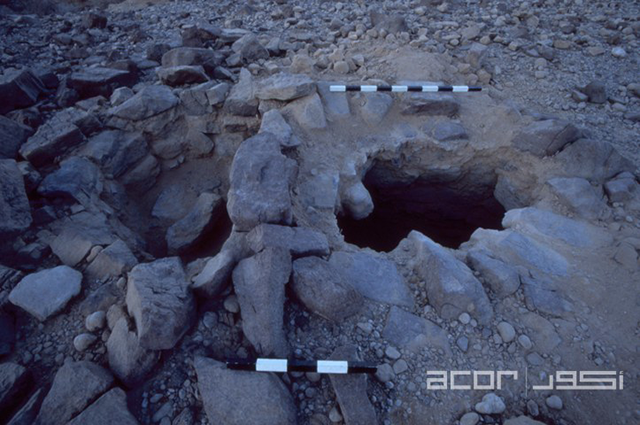You are here
Wadi Rum’s Nabataean temple: unveiling sanctuary of Goddess Lat
By Saeb Rawashdeh - Jun 02,2024 - Last updated at Jun 02,2024

The shrine of goddess Lat in Wadi Rum (Photo courtesy of Nabataea)
AMMAN — On the outskirts of Petra and its hinterland, archaeological teams studied the Nabataean sites and structures, and one of such settlements was discovered in Wadi Rum in 1930. The British archaeologist Diana Kirkbride (1915-1997) dug in Wadi Rum in 1959 and the Department of Antiquities (DoA) launched another operation of clearing the area in 1962.
Due to the exposure to elements, some remains that were left bare suffered from deterioration before the French institute Ifpo decided to clean the site in 1995 with the approval of the DoA.
One of such structures is a Nabataean temple in Wadi Rum that was studied by the Belgian Professor Laurent Tholbecq.
“One of the main goals of the 1996 season was to record in detail the remains of the temple exposed in 1962 in order to provide a complete update of the last plan published by Kirkbride,” Tholbecq said, adding that a new Thamudic inscription reused in the foundation of the central chapel (naos) of the Nabataean temple refers to the construction of a sanctuary of Lat- a supreme goddess- done by a member of a tribe well-attested on other inscriptions of the area.
Tholbecq explained that around the late 1st century BC to early 1st century AD, a rectangular podium had been erected, probably above the afore mentioned first sanctuary.
“It was reached by a narrow, centred stairway with seven steps. This podium supported a central chapel of 3.2 m x 2.7 m and was surrounded by 14 columns on its four sides. This peripteral temple had four columns on its front and back and five columns on both sides,” Tholbecq elaborated, adding that the column drums, standing on attic bases, were carefully dressed, with a reserved undressed circle of l centimetre high on both their extremities (top and bottom). If the height of the drums vary, the transitions from one drum to the other were intentionally underlined.
Unlike other Nabataean temples where the main podium is reached by two small stairs of narrow steps, this chapel was not preceded by steps but its access was limited by a grill.
The scholar continued: “In a later subphase, a thin dwarf wall was built between the columns. We might suggest that this wall did not reach the capitals. It was apparently too thin [less than 0.25m] to support any entablature but could
have supported a light cornice subtly different from the one of the naos.”
According to Tholbecq, the temple was built during the Nabataean King Aretas IV who ruled between 9/8 BC and 40 AD.
The temple was trapezoidal in outline and the link between the temple and the western complex was established through a hall and several steps leading to a door in the back wall of the monument, Tholbecq said, adding that two stairways were built on its back corners reaching an upper floor or the roof of which nothing remains.
Wadi Rum was outside of the major caravan routes although it was linked to Qurraya (Ostama) and Tabuk (Thapava) or other Nabataean sites of the Madian, the scholar said, adding that springs attracted nomadic tribes to build the shrine dedicated to Lat.
“The role of the Wadi Rum settlement as part of a regional sanctuary is clear. The primitive building dedicated to Lat was the meeting place for several nomadic tribes. It was followed by the building of a major temple going back to Classical models,” Tholbecq underscored.
Related Articles
AMMAN — For the past decades, scholars tried to figure out the Nabataean religious practice and the Nabataean pantheon.What characterises th
AMMAN — The Nabataean social structure revolved around the family, clan and tribe, and it can traced back the Nabataean nomadic past.
AMMAN — At the lecture “New important archaeological result in the downtown Petra”, Laurent Tholbecq from the Université Libre of Brussels,

















